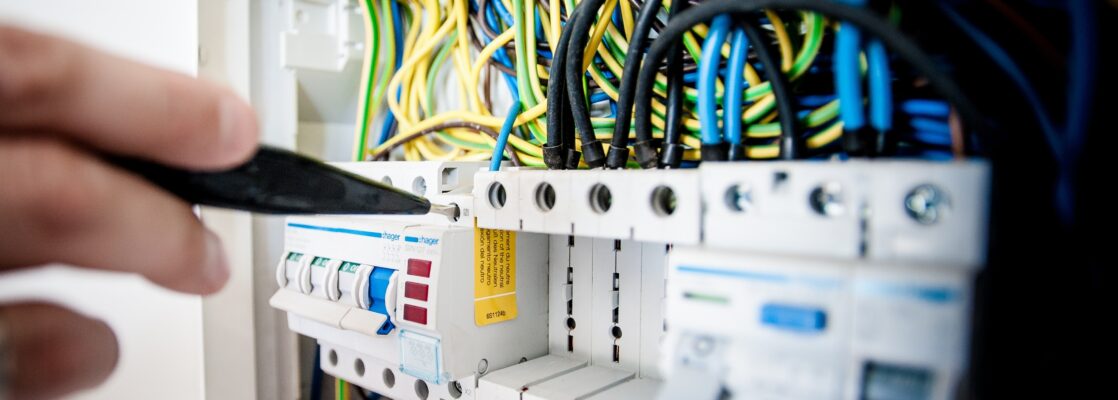 The architectural electrical plan (or architectural electrical diagram), makes it possible to express its electricity needs in the home: It will list on the home plan the location and number of electrical devices (sockets, switches, light points…. ). And why architectural electrical plan ?Because it is carried out at the same time as the general architectural plans.
The architectural electrical plan (or architectural electrical diagram), makes it possible to express its electricity needs in the home: It will list on the home plan the location and number of electrical devices (sockets, switches, light points…. ). And why architectural electrical plan ?Because it is carried out at the same time as the general architectural plans.
The usefulness of an architectural electrical plan:
Often readers ask me if this plan is really essential for an electrical installation – whether new or renovating.
In general, I answer by asking if they happen to go to an unknown destination without a map or without gps (or to go on vacation to the beach without the swimsuit)
More seriously, this plan is in my opinion essential: it allows you to clearly visualize the elements of the future electrical installation (sockets, switches, lights) in the home and to project yourself a little more into the use that you can make of it every day. days.
It will also be useful to you during your work so that you do not forget anything – it sounds silly but I can assure you that when you are “in the juice” sometimes it happens that information accumulates and omissions appear. Nothing could be more annoying than forgetting to pull out an outlet after all the partitions have been installed.
The symbols of the architectural electrical plan:
Before making the architectural electrical diagram, you must know the symbols that will be distributed on the plan:
 The method for making the architectural electrical plan
The method for making the architectural electrical plan
The first advice I can give you for establishing the architectural electrical plan is to project yourself into the room by asking yourself the following questions for each room:
- By where I go and by where I go: This question will allow you to position the switches .
- Do I need to turn off / on the light from two different places: this question is whether you need to and fro, and where to position them architecturally electrically .
- Do I need to switch off / on the light from more than two different places: this question allows to determine if you need a toggle switch , and in this case, to place the pushbuttons (mandatory for the switch ).
- What type of furniture will be placed in the room, and where: For a bed for example, you must place sockets on each side for bedside lamps. The telephone socket as well as the TV and network sockets should preferably be coupled with a nearby socket.
- Will I have office automation in this room: This question allows you to know if the number of network outlets in the room in question should be increased.
- Am I going to have a television in this room, and where am I going to put it?
- Is the room humid and does it have water points: The bathroom mainly, a room in which you cannot position sockets and switches anywhere.
- Is the room going to accommodate specialized outlets , such as the washing machine, the dryer
- Finally, keep in mind that you may want to change the layout later, that the family can grow (change from a desk to a nursery). So make reservations in certain places.
Each of the answers will allow you to know which symbol of the electrical installation to position in the room, in the best possible place.
Best Electricians in the Pacific Northwest
Here are some highly reviewed and respected electrical architects that you can turn to for your plans:
- Washington: Brenna Electric in Seattle, WA
- Oregon: Mr. Electric in Portland, OR
- Idaho: Simons Electric in Twin Falls, ID
- British Columbia: ProAmp Electric in Coquitlam, BC
You can rely on an experienced electrical technician to put together a plan that meets all regional specification and regulations.
…






 Electrical work requires attention at all levels. We often talk about being very careful when making electrical connections or working on the electrical panel. But we often forget the basics.
Electrical work requires attention at all levels. We often talk about being very careful when making electrical connections or working on the electrical panel. But we often forget the basics. Analyze the surroundings and nearby electrical networks:
Analyze the surroundings and nearby electrical networks:

 Cooperatives are now a minority, but there is potential to continue growing because there is a “coherent critical mass inclined to environmentalism” in society and gives as an example what happened with telecommunications.
Cooperatives are now a minority, but there is potential to continue growing because there is a “coherent critical mass inclined to environmentalism” in society and gives as an example what happened with telecommunications.